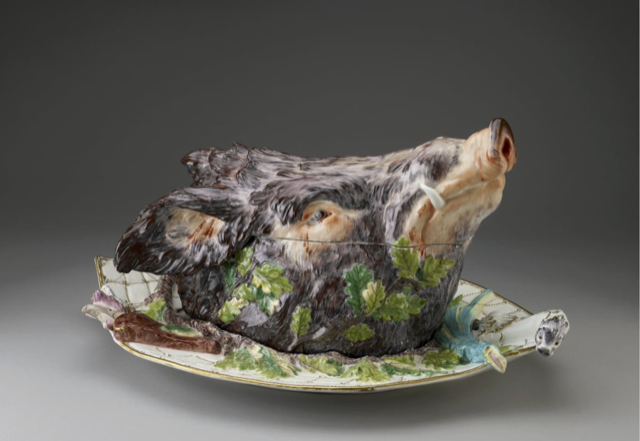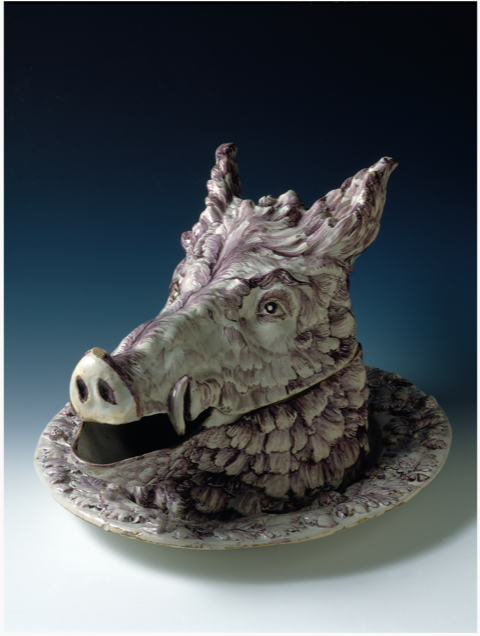
by Brooke Chilvers
There was a time when my husband did not to come home until he had “the bacon.”
In those days, for my French hunter, this meant spending most of our autumn weekends in Picardy shooting snipe (bécassines) as guests in a hut (hutte) — actually a comfortable chalet with a full kitchen that was half-buried in the busy migratory marshes of the Baie de Somme. It took six birds to feed the two of us, with tidbits for our host’s excellent hunting dog, Vanille, a heterochromic English setter, also infamous for tearing steaks off the BBQ, wolfing down his owner’s extravagant cheese platters, and knocking off the farmer’s chickens.
Back in Paris, Vanille was walked by both B.’s wife and his mistress, who lived around the block and shopped at the same butcher – as did I. Yet B. insisted his (already second) spouse had no inkling of this infidélité (or the next), as if a woman could not recognize her own dog. But that’s another story.
If I didn’t stuff and roast the snipe, I made a small terrine that still required an expensive slab of foie gras and a truffle, plus the time to boil down the tiny bones in Madeira.

“Bacon,” in those days, also meant the hare that Rudy hunted with Alain in Lorraine, on Mondays, just the two of them, after the weekend driven hunts for boar and roe deer, and all the drinking, dining, and horn blowing were done. Already by the mid-‘80s, their bags were dropping, from six to three to one. The last time they hunted together (RIP, Alain), they saw a single lièvre taking off across the winter fields, now peppered with turbines, and didn’t raise their shotguns. Ditto for the partridge.
But for years I made an annual terrine de lièvre, marinating it in a bottle of Nuits-Saint-Georges that generous Alain donated for the task, when I would have oh-so-much preferred to drink it, and rest my beast in a cheaper Burgundy instead. As the quatre épices (ginger-nutmeg-clove-pepper)-perfumed marinade overwhelmed both my nostrils and any filter in an old fridge that could not freeze ice cream, I eventually switched to a less overwhelming white-wine steep, flavored by bay leaves, thyme, juniper berries, and chervil. And drank the Nuits-Saint-Georges.
Over the years, I accumulated an indecent number of game-themed lidded earthenware pots, also called terrines. Unfortunately, translated into English as “tureen,” when searching for deals on the internet, this inevitably brings up soup tureens (soupières), which I covet but do not collect.

Terrines led us on a hot summer’s day in Strasbourg to the cool and empty Musée des Arts décoratifs, and specifically to the Hannong room, a family name closely associated with the design, development, and production, for 60 years over three generations, of mid-18th century Strasbourg faïence, or tin-glazed earthenware.
It all started in 1709 with the arrival in Strasbourg of Dutch pipe-maker Charles-François Hannong. Moving from pipes to enameled earthenware stoves to faïence, and eventually also to porcelain, the Hannongs opened factories in Strasbourg (1721), and Haguenau (1724).
Until the widespread production of soft-paste porcelain – first created by German chemist Friedrich Böttger, in 1709, for Meissen in Dresden – blue and white faïence was an acceptable imitation of Chinese export porcelain. While looking to expand into porcelain production, Charles-François’s son, Paul-Antoine Hannong (1701–1760), introduced the petit feu – or overglaze method of firing – which allowed a greater range and more nuanced coloring, such as pale greens and rose, for decorating faïence. Paul also developed a method for gilding in 1744, and brought the Löwenfink family of brilliant Meissen artists from Dresden in 1748.

From 1748 to 1754, alongside its well-known flowered porcelain, Hannong famously produced lidded terrines and soup tureens in the form of pumpkins and cabbages, as well as turkeys, doves, pheasants, and more. His raised snout boar heads (hures) come complete with tusks, a lolling tongue and piggy-pink mouth, as well as the veins and arteries of its severed neck, painted in purple of Cassius pigment, a color Paul acquired only in 1748.
But it all came to an end in France, in 1755, when King Louis XVI transferred all rights to manufacture porcelain exclusively to the manufacture nationale de Sèvres. This forced the enterprising family to move its business to the German Rhineland, where they established the Frankenthal Porcelain Factory near Mannheim, staffing it with Strasbourg employees. Finally, in 1766, when restrictions in France lightened, Paul’s son, Joseph, returned to Strasbourg and restarted production. But, loaded with debt, he was forced to flee back to Germany in 1780.

There, debt had already forced the family to sell out to Elector Carl Theodor of Bavaria in 1762. He owned the factory for 37 years, until it was occupied during the Napoleonic Wars by the French, who shut it down for good in 1799.
In the meantime, life-sized lidded boar’s head tureens had become widely popular on well-to-do tables, and designs were also produced in Chelsea, Höchst, Palissy, and other factories, including Lunéville and Kiel. As one author put it, “They must have made an impressive effect on the dining table, especially when filled with hot soup or stew emitting clouds of steam through the snout.”

The motif tickled enough fancies that Dutch delft makers produced them, like the example in the Los Angeles County Museum of Art. In fact, in 1763, orders were placed with the Dutch East India Company for 25 Qianlong Period Chinese export porcelain boar heads. Nineteen pieces were shipped in 1764 (the rest cancelled as being too risky to transport), and are greatly valued today.
With so many of our old pals now walking up the great hunting fields beyond us, taking with them the woodcock, pigeons, and doves of past terrines, I’ve learned to content myself with the chicken-liver mousses and classic pork pâtés in the marvelous cookbook, Pâté, Confit, Rillette by Brian Polcyn.
While writing her blog, Brooke uncovered a boar-headed terrine on Etsy for $17.60.
